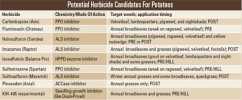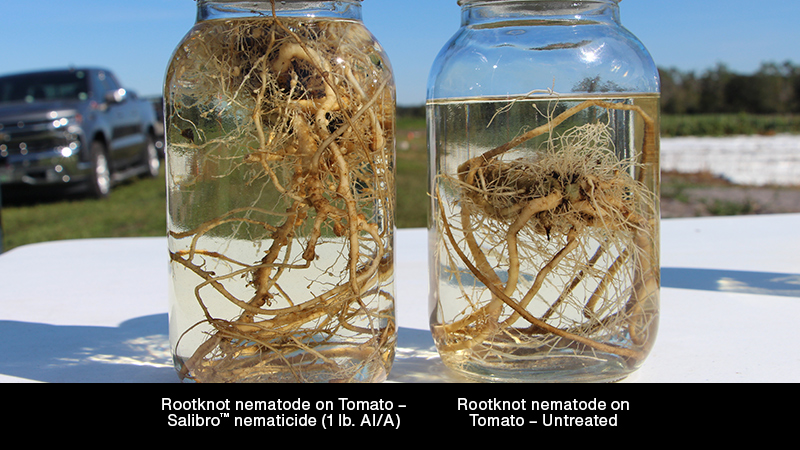Rotate Herbicides For Effective Weed Control

To produce high-yielding, marketable potatoes, managing weeds is a necessity. The problem, however, is that the number of active ingredients (and modes of action) of potato herbicides is very limited compared to other commodities.
Herbicides such as Dual (metolachlor, Syngenta Crop Protection), Sencor (metribuzin, Bayer CropScience), Prowl (pendimethalin, BASF), and Matrix (rimsulfuron, DuPont Crop Protection) are commonly used to manage weeds in potatoes. Continuous use of the same herbicides or similar modes of action year after year, however, has resulted in some weeds, such as lambsquarters, pigweed, and ragweed, becoming resistant to certain products.
In addition, perennial weeds, such as quackgrass, can still pose a problem to producers. Since herbicides play an important role in potato production, it is important that currently registered herbicides are used sensibly and new herbicides (i.e. ones with different modes of action than those currently labeled) are identified that fit into a potato pro- duction system and provide effective weed control, minimal crop injury, and environmental safety.
A Limited Number
The number of active ingredients (and modes of action) of potato herbicides is limited. There could be a major negative impact for successful potato weed management programs, if certain herbicides lose their potato registrations. Some negative impacts include less or non-effective herbicides to control existing weed populations, increased chance for weed populations to develop herbicide resistance or weed shifts, and overall increased costs to manage weeds with numerous weed control tactics per season.
Universities, agrichemical industries, and especially the IR-4 Project has worked continually with growers, scientists, and commodity organizations to identify minor crop pest control needs. Over the past several years, these groups have identified some newer herbicides that may be potential candidates for use on potato production systems in the Eastern U.S. These herbicides include Aim (carfentrazone, FMC Corp.), Outlook (dimethenamid, BASF), Chateau (flumioxazin, Valent USA), Sandea (halosulfuron, Gowan Co.), Raptor (imazamox, BASF), Balance Pro (isoxaflutole, Bayer CropScience), Axial (pinoxaden, Syngenta Crop Protection), Spartan (sulfentrazone, FMC Corp.), Maverick (sulfosulfuron, Monsanto), and KIH-485 (experimental, K-I Chemical USA).
Currently, research is being conducted to determine efficacy and crop safety for these newer herbicide chemistries. Through this and subsequent research, the data could be used to assist in obtaining product registration for use in potatoes.
Other benefits to growers would include information on how to more effectively control weeds with combinations of registered products and potentially new herbicide options.
In addition to identifying new potato herbicides, it is important to educate growers about other weed management strategies including cultural controls, the use of cover crops, cultivation regimes, crop rotations, and how to prevent herbicide resistance and weed shifts.
Source D. Lingenfelter









